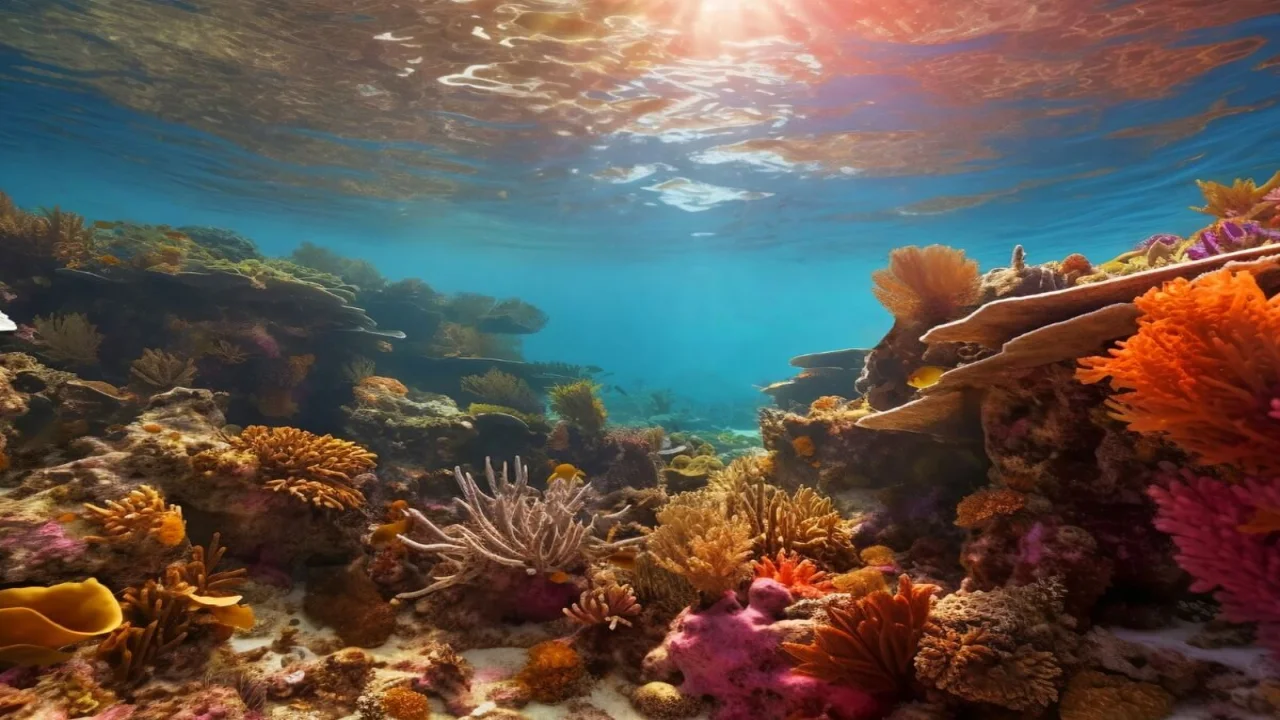Coral Reefs: Types and Formation Explained
Delve into the captivating world of coral reefs, exploring their various types and the fascinating process of their formation. Discover the beauty and significance of these marine ecosystems and gain insights into their conservation.

Coral reefs are captivating ecosystems teeming with life beneath the ocean's surface. Understanding the formation process and various coral types is crucial for appreciating their significance and implementing effective conservation strategies. This comprehensive guide dives into the world of corals, shedding light on their formation and highlighting the diverse types that exist.
- A coral reef is a ridge in the sea with its upper surface nearer to the surface of the water.
- This ridge is formed by calcium carbonate-secreted coral organisms of cnidarians.
- These reefs are formed in warm, clear and shallow sea waters.
- Hence these reefs are confined to tropical regions only.
- These reef-building organisms require 22 to 28°C and shallow depths up to 30 meters.
- There are 3 types of coral reefs.
- Fringing reef
- Barrier reef
- Atolls reef
Fringing Reef
- It lies close to the shore.
- The reef may extend to a distance of 200 meters from the shore into the sea. Its active growing region is called the reef front.
- It is facing the sea.
- The narrow shallow water channel between the shore and the reef is called reef flat.
- This reef is largely composed of calcium carbonate, sand, dead, and living coral colonies, and other organisms.
Barrier Reef
- This type of coral reef is located some distance from the shore.
- The reef front is facing the sea.
- The reef and shore are separated by a deep stretch of water called a lagoon. This lagoon is suitable for navigation.
- The best example of a barrier reef is "The great barrier reef of northeastern Australia.
- It is 15 to 250 km away from shore. It extends up to 2000 km in length.
Atoll Reef
- It is also called a coral island.
- It is a ring-like or horse-shoe-shaped reef that encircles a lagoon.
- The lagoon is very deep and is suitable for navigation.
- The ring-like reef may be broken by several channels.
- This is called an atoll.
- The biggest Atoll in the world is seen in the form of the Suva diva of Maldives.
Theories explaining the formation of coral reefs:
Many theories were put forward to explain the formation of coral reefs.
Darwin - Dana subsidence theory:
- Reefs start as fringing reefs on a shore slope.
- This fringing reef by the subsidence of the reef flat into a lagoon becomes a barrier reef.
- A fringing reef formed around an island becomes an atoll if the island is fully submerged.'
- This theory is supported by Dana and Davis.
Submerged bank theory:
- Because of the sedimentation, shallow slopes are formed, on which reefs are developed.
- By the growth of the outer edges of the reef and dissolution of inner regions of the reefs barrier reefs and atolls are formed.
Daly Glacial-epoch theory:
- In the last glacial period, water was drawn from the ocean to form ice caps.
- Because of this, the ocean level was lowered by 60 to 70 meters.
- Rat slopes are formed, which are suitable for the development of reefs.
- When there is a rise in temperature and with the rising of ocean level by melting of ice the reef had grown further.
- Thus barrier reefs and Atolls are formed.
None of the theories gave a satisfactory account of coral reef formation.
Coral Reefs Around the World
The following image shows coral reefs around the world in different zoogeographical regions. In the below-shown coral reef picture, the red color dotted area indicates the coral reefs' locations on the globe.
The information on this page is peer reviewed by a qualified editorial review board member. Learn more about us and our editorial process.
Last reviewed on .
Article history
- Latest version
Cite this page:
- Comment
- Posted by Dayyal Dungrela